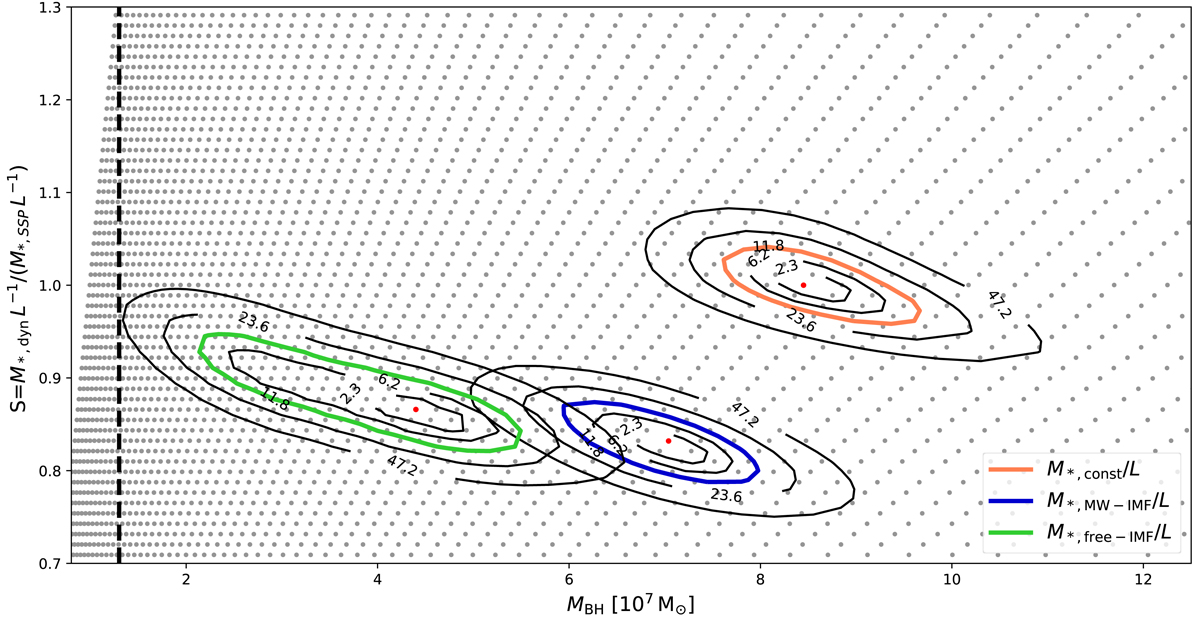Fig. 8.

Download original image
Results of the triaxial Schwarzschild modelling performed with DYNAMITE. After constraining the intrinsic shape and dark matter parameters, a fine grid of models was run to derive the mass scaling factor S and the central black hole mass MBH. S accounts for differences in the stellar M/L derived from SSP modelling and dynamical modelling. Each Schwarzschild model is indicated as a grey dot. The overplotted contours indicate the ![]() levels. We show the results from all three modelling runs with different assumptions on the stellar mass-to-light ratio M*/L in this figure. The coloured contours indicate the 3σ confidence intervals for the different modelling runs. The mass measurements are robust as indicated by the closed χ2-contours outside of the 3σ confidence interval. The best-fitting models were derived as the minimum of the χ2 distribution and are indicated with a red dot, respectively. For the models with constant stellar M/L, we normalised the dynamical stellar M/L by the best-fit M/L. The vertical black line indicates the smallest black hole mass that we expect to robustly detect based on the SoI argument and the spatial resolution of the SINFONI observations.
levels. We show the results from all three modelling runs with different assumptions on the stellar mass-to-light ratio M*/L in this figure. The coloured contours indicate the 3σ confidence intervals for the different modelling runs. The mass measurements are robust as indicated by the closed χ2-contours outside of the 3σ confidence interval. The best-fitting models were derived as the minimum of the χ2 distribution and are indicated with a red dot, respectively. For the models with constant stellar M/L, we normalised the dynamical stellar M/L by the best-fit M/L. The vertical black line indicates the smallest black hole mass that we expect to robustly detect based on the SoI argument and the spatial resolution of the SINFONI observations.
Current usage metrics show cumulative count of Article Views (full-text article views including HTML views, PDF and ePub downloads, according to the available data) and Abstracts Views on Vision4Press platform.
Data correspond to usage on the plateform after 2015. The current usage metrics is available 48-96 hours after online publication and is updated daily on week days.
Initial download of the metrics may take a while.


